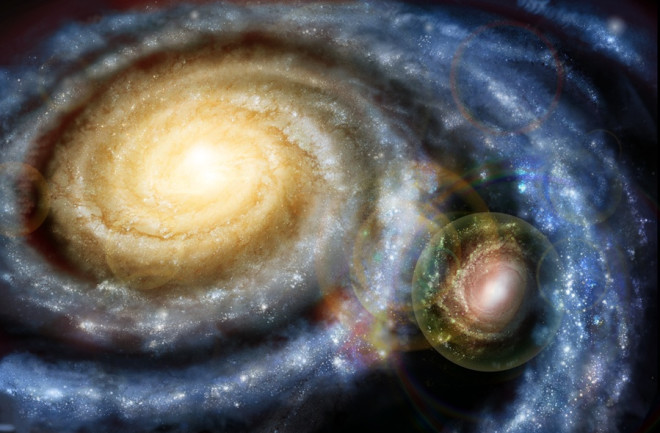One winter night in 1969, at an observatory atop Kitt Peak in Arizona, Michael Disney had a funny thought. As he peered into a huge, superluminous galaxy, he wondered: What if an alien astronomer there were staring right back? At the eyepiece of its own telescope, the intelligent extraterrestrial might likewise be ogling Disney’s smaller, fainter home galaxy, the Milky Way.
Then another thought cut through the whimsy. The young Welsh astronomer realized the alien had no chance of seeing the Milky Way, let alone the universe’s oodles of dimmer galaxies. Overwhelmed by the glare of all the stars stuffed into its resident galaxy, the alien would unknowingly be blinded to most of the cosmos.
Disney wondered if we might be similarly deceived, awash in the inescapable glow of our own surroundings. “It occurred to me there could be a whole universe up there of hidden galaxies, just a little dimmer than those we can detect from Earth,” says Disney, an emeritus professor at Cardiff University in Wales.
Since that revelation in the desert nearly a half-century ago, Disney, now 80, has searched for a shadow galactic realm. His hunch gained momentum in the 1980s and 1990s, but at the turn of the century, the trail ran cold. Disheartened and defeated, Disney relinquished the hunt.
But recently, serendipitous sightings and new technology have reinvigorated the concept of a hidden cosmos. “Most of the universe is likely undiscovered,” says Greg Bothun, an astrophysicist at the University of Oregon who has long studied faint galaxies. The emerging population of dim galaxies likely outnumbers, and is strikingly different from, the typical bright galaxies we know and love, challenging our conventional theories of galaxy formation and evolution. Dim galaxies may also solve an old mystery about missing matter in the universe.

